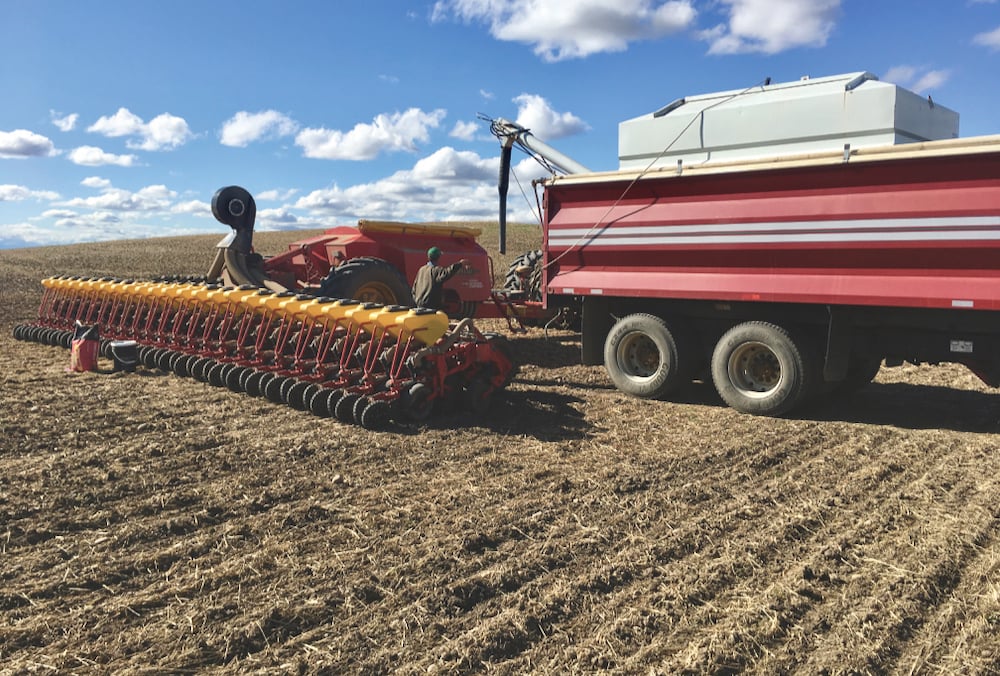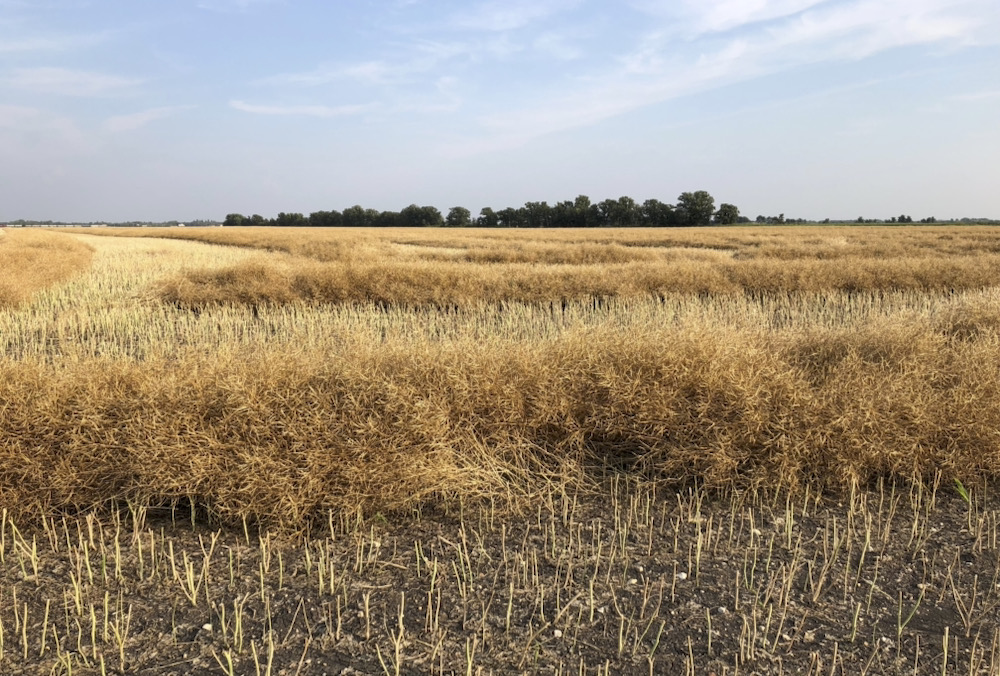Healthy soil is the craziest, busiest jungle you can imagine. One gram of clubroot-infested soil can have a billion clubroot spores. A billion! All in a pinch of soil the size of a Skittle! Fusariums, pythiums, rhizoctonia and countless other beneficial fungi, bacteria and microbes are there, too. So are ions and molecules of calcium, magnesium, nitrogen, phosphorus, potassium, sulphur and all the micronutrients. A mite is like a blue whale or a brontosaurus in that ecosystem.
One question that comes up in discussion about soil health is whether continuous production of one crop, over time, will boost the population of beneficial organisms and create a net positive soil environment for the crop. Or will it create a net negative, with pest species overtaking beneficial species?
Read Also

Advancing regenerative farming practices
Last year, Griffith Foods launched a pilot program to promote regenerative agriculture in Ontario wheat in partnership with Parrish &…
“Based on what we do know, it seems continuous cropping, and its effect on soil biology, creates a net negative for crop yield when compared to a more diverse crop rotation,” says Gregory Sekulic, agronomy specialist for the Canola Council of Canada. “Simply put, soil health, crop health, and farm productivity all benefit from increased diversity.”
Mario Tenuta, the University of Manitoba’s Canada research chair in applied soil ecology, points to several studies in other crops showing that after a decade or so of continuous cropping, a soil microbial population develops that can limit soil-borne diseases.
This was shown in a wheat study in the Pacific Northwest of the U.S., where Pseudomonad bacteria built up over time to reduce the take-all fungus on wheat roots. In Wisconsin, scab-related bacteria built up over time to suppress common scab of potato. In California, fusarium and other fungi suppressed sugar beet nematode. And in Switzerland, Pseudomonads suppressed black root rot of tobacco.
That sounds mildly positive. “However,” Tenuta says, “this benefit cannot compensate for the significant yield loss associated with continuous cropping.”

These plot studies showed that as disease built up in a continuous cropping situation, yield dropped to 30 per cent of normal, or lower, over the first 10 years or so. It took a long time for yield to rise again while the microbes that attacked the disease-causing organisms built up. Yield then flatlined at around 60 to 70 per cent of the yield achieved when the same crop was produced in a rotation with other crops.
“We don’t have canola studies, but it would likely follow a similar pattern,” Tenuta says.
Stacked rotation
But is there some middle ground? As Tenuta points out, these continuous cropping studies showed limited disease effect on yield in the first couple of years. Then yield fell off a cliff.
Given that, it makes some researchers wonder about the potential soil health and pest management value in the “stacked rotation” concept. With a stacked rotation, instead of canola-cereal-pulse-canola-cereal-pulse, the sequence would be canola-canola-cereal-cereal-pulse-pulse. It has the same number of canola crops in the long term, but the break between each crop is longer.
“The key to the stacked rotation is the long break,” says Dwayne Beck, manager of the Dakota Lakes Research Farm near Pierre, South Dakota. Beck has not specifically tested canola, but his yield experience with stacked rotations is that, in general, “the second year will not be as good as the first, but the first will be very good.”
It comes back to the benefit of diversity as a profit management tool. “Stacked rotations attempt to keep pest populations confused through diversity in the sequences and intervals used,” Beck says. “This approach can reduce costs and it minimizes the chance of tolerance, resistance, and biotype changes.”
Beck tells this story: “I saw an agronomist give what he thought was a negative example of a producer’s rotational planning. He stated that the gentleman would seed a particular field to wheat every year until jointed goatgrass pressure became sufficient to preclude wheat. He would then seed it continuously to sorghum until shattercane overwhelmed him. At that point he would seed sunflowers in successive years until white mould became a major problem. Then he began again with the wheat program.”
“The producer was at least responding to the natural cycles in his field,” Beck continues. “It might be better if he anticipated these occurring so that the switch could be made in advance. However, he probably was doing a better job than someone who blindly planted a corn-soybean, wheat-canola-wheat-pea, or wheat-corn-soybean rotation and was surprised when he had to keep changing technology to deal with new problems.”
With canola, we know that there are benefits to blackleg and clubroot management from long rotations between canola crops. Would the longer break that this stacked two-in-six rotation provides be better than a one-in-three?
Sekulic would like to see more work on the stacked rotation, especially as a management tool on farms dealing with these diseases in a big way. However, he notes, existing evidence is not generally supportive of back-to-back canola.
Crop insurance data shows a distinct yield drop for canola on canola stubble versus canola on any other stubble. And research from Agriculture and Agri-Food Canada suggests a 20 per cent yield drag for canola on canola stubble versus canola on any other crop stubble.
But as Beck notes, “I doubt there are many studies of canola on canola where there was a four-year break before the first canola.” The long break, he would argue, is not well tested.
While stacked rotations may be worthy of more study, the key point today is that continuous production of any crop does not create a better soil environment for that crop over time. Diversity benefits yield in the short term and the long term.
“Growers in continuous canola systems trade off yield loss for other benefits that may have to do with delivery options, critical challenges with rotation crops, or other factors,” Sekulic says. “But evidence shows that a crop monoculture, from a soil symbiosis perspective, is a failed concept. Crop rotation and diversity rule.”
Jay Whetter is communications manager with the Canola Council of Canada. For more on the risks of continuous canola, read the article “Rotations and risk management” at canolawatch.org.















